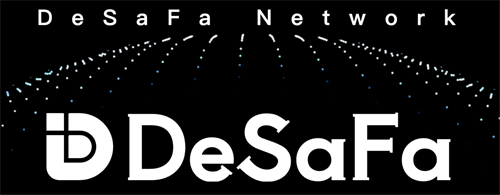HONGKONG, September 5, 2025 — DeSaFa, a decentralized, safer, and faster network platform, today announced plans to launch its mainnet on September 9, 2025, following a successful public beta that began on July 1, 2025. Built to connect a global mesh of nodes into a privacy-first access layer for the open internet, DeSaFa integrates hardware-grade devices and consumer apps to deliver resilient connectivity for individuals and enterprises alike.

Founded in March 2023, DeSaFa has assembled a globally distributed team with deep credentials in Web3, information security, VPN, blockchain, and router hardware. Over 30% of the team holds a PhD, including key members such as a postdoctoral researcher from Stanford University. The platform already supports DRouter and DWorker devices to form a full-stack decentralized secure network, and will roll out DApp (mobile) and DWIFI (portable Wi-Fi) to broaden access later this year.
Below is an edited interview with Benison, DeSaFa’s founder, on the project’s vision, progress, and what’s next.
An Interview with DeSaFa Founder Benison
Q: For readers new to DeSaFa, what is it in one sentence?
Benison: DeSaFa is a decentralized, hardware-accelerated network that lets anyone securely access global internet resources while contributing bandwidth to a resilient, privacy-first ecosystem.
Q: When did the journey start, and who is building it?
Benison: We started in March 2023 with a simple question: can we make secure global connectivity both faster and more democratized? Our team is now truly global, with experts across Web3, information security, VPN, blockchain, and router hardware. Over 30% of our contributors are PhDs; one of our core researchers is a Stanford postdoc. That blend of academic rigor and production engineering is why we’ve moved quickly without compromising on security or reliability.
Q: What have you learned from the public beta since July 1, 2025?
Benison: Two things. First, hardware matters. Our DRouter and DWorker devices provide consistent performance, verifiable node integrity, and better network quality of service than purely software approaches. Second, scale is happening: in just over two months, we’ve approached 3,000 DWorker service nodes during the beta. That density improves route diversity, uptime, and user experience.
Q: What’s shipping on mainnet and what’s on the near-term roadmap?
Benison: On September 9, we’re launching the mainnet foundation: node coordination, secure routing, and settlement infrastructure designed for high availability. In parallel, we’re preparing two access products:
l DApp — a mobile application that lets users leverage DeSaFa’s network on their existing smartphones.
l DWIFI — a portable “Wi-Fi to DeSaFa” device so users can securely connect laptops and other devices on the go.
These will make DeSaFa accessible without requiring specialized equipment, while our DRouter/DWorker line continues to power the network’s backbone.
Q: You’ve suggested DeSaFa could become the largest VPN service provider. What gives you that confidence?
Benison: Traction plus architecture. With nearly 3,000 DWorker nodes already active in beta, we’re seeing strong community participation before mainnet incentives. Because DeSaFa aligns user demand with node supply, we expect rapid growth in coverage and throughput. We believe we can serve millions of users in the near future and ultimately compete as the world’s largest VPN-class provider—but with the added benefits of decentralization, hardware-level trust, and route diversity.
Q: How do enterprises fit into the picture?
Benison: We’re actively developing higher-assurance modes and compliance-aware routing tailored for cross-border e-commerce and multinational companies. These scenarios require predictable performance, auditability, and jurisdiction-sensitive policies. Our hardware-anchored nodes and policy engine are being designed to meet those requirements without sacrificing the privacy guarantees consumers expect.
Q: Why invest in hardware (DRouter and DWorker) when software is easier to scale?
Benison: Security, performance, and reliability. Hardware gives us stable cryptographic identity, tamper resistance, and optimized packet processing. It also enables remote attestation and quality verification so the network can preferentially route through trustworthy nodes. Software agents will always have a place, but purpose-built hardware raises the baseline.
Q: And what about node operators?
Benison: Clear onboarding, hardware options for consistent uptime, and a pathway to earn by contributing high-quality bandwidth. As the network grows, we’ll continue to refine rewards to prioritize availability, performance, and compliance.
Availability
DeSaFa’s mainnet is scheduled for September 9, 2025. DApp and DWIFI will begin phased releases later this year. For updates, technical documentation, and participation details for node operators and early users, follow DeSaFa’s official channels–https://www.desafa.net.
About DeSaFa:
DeSaFa is a decentralized secure network that combines hardware-anchored nodes with consumer-friendly access points to deliver fast, private connectivity worldwide. Founded in 2023, DeSaFa’s team brings deep expertise in Web3, security, VPN, blockchain, and networking hardware.